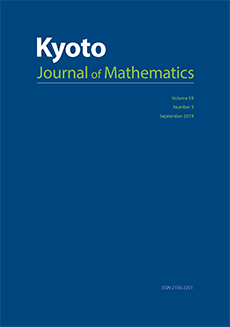Abstract
In this article, we study the rigidity properties of deformation parameters of the natural action of a discontinuous subgroup , on a homogeneous space , where stands for a closed subgroup of a Euclidean motion group . That is, we prove the following local (and global) rigidity theorem: the parameter space admits a rigid (equivalently a locally rigid) point if and only if is finite. Remarkably, it turns out that is compact whenever is infinite, which makes accessible the study of the corresponding parameter and deformation spaces and their topological and local geometrical features. This shows that the Calabi–Markus phenomenon occurs in this setting. That is, if is a closed noncompact subgroup of , then does not admit a compact Clifford–Klein form, unless itself is compact. We also answer a question posed by T. Kobayashi. That is, no homogeneous space admits a noncommutative free group as a discontinuous group.
Citation
Ali Baklouti. Souhail Bejar. "On the Calabi–Markus phenomenon and a rigidity theorem for Euclidean motion groups." Kyoto J. Math. 56 (2) 325 - 346, June 2016. https://doi.org/10.1215/21562261-3478898
Information





